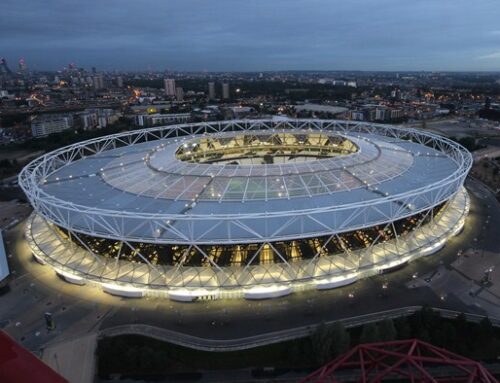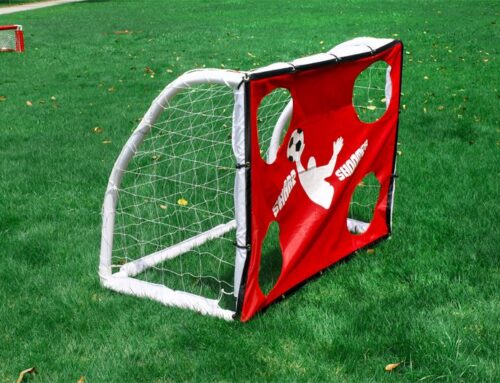
In the beginning, soccer jerseys did not have numbers. Player numbers were introduced in 1928 by Chelsea against Arsenal in the England First Division League. Later, other teams gradually adopted this custom.
So what are the meanings of football jersey numbers? What is a good football jersey number? Without further ado, let’s dive into it!
Meaning of soccer jersey number
#1
Goalkeepers wear the No. 1 soccer jersey in all official competitions. Today’s well-known goalkeepers are Casillas, Buffon, and Neuer, as well as the younger generation of De Gea, Ter Stegen, Courtois, etc.
#2
Traditionally, the number 2 soccer jersey has been worn by the right back. Bazilian star Cafu wears the legendary number 2, whether he is playing for the club or the national team. Gary Neville and Chelsea defender Ivanovic also wear the number.
#3
The left-back position. Europe and South America are slightly different, in Europe, this number of many teams is usually a left back. Paolo Maldini is a famous example of this.
#4
Players who wear number 4 are often scavengers. Generally speaking, they work behind the back line before the small penalty area. The number 4 position requires hard work, mental toughness, and courage. Number 4 players, such as Inter’s Javier Zanetti, can also serve as captains.
#5
In most cases, the number 5 soccer jersey is worn by the central defender, such as England defender Leo Ferdinand. If the 4 is to defend with the body, then the 5 is to defend with the brain. The most famous number 5 is that of the football emperor Beckenbauer. However, there is one exception. After Zidane joined Real Madrid, he also chose the # 5 soccer jersey in memory of Manuel Sanchez.
#6
In the beginning, this number was also a defensive player, such as the Italian legend Baresi and the captain of the England national team, John Terry.
There are also midfielders who prefer the number 6, such as Argentine master star Fernando Redondo, the soul of Barcelona and Spain midfielder Xavi, and so on. Although the number 6 is mainly worn by defensive players, its position on the court is slowly changing, and its responsibility goes beyond defense alone.
#7
The right midfielder/right winger number, sometimes also appears on the striker. It is the number of the “team soul” in Manchester United, including George Best, Cantona, Beckham, and Ronaldo. It became popular after Raul when it became synonymous with Prince Bernabeu in the Real Madrid team. Now Cristiano Ronaldo has also chosen number 7. There are also other famous players, such as Shevchenko, Louis Figo, and others.
#8
As the second core player on the field after number 10, number 8 is a classic central midfielder/attacking midfielder. He is more involved in organizing and coordinating the team and is the backbone of the midfield. “Black Swan” Rijkaard is certainly the most classic of the Dutch Musketeers, as well as Gascoigne, “Little White” Iniesta, Gerrard, and Lampard are all 8 at the club.
#9
The striker’s number of the Central Forward, the striker’s representative. There are too many classic players in Number 9: Van Basten, Batistuta, Ronaldo, Inzaghi, Torres… It is said that Number 9 represents the main striker of the team because as a striker, no one is reluctant to wear it.
#10
It is the team’s midfield engine that wears number 10 in the front waist, which is the number one core member. During the reign of the football king Pele, this number has been star-studded, Zico, Platini, Maradona, Gullit, Totti, Messi… There are too many classic number 10s that will never be forgotten.
#11
A left-sided midfielder or winger, although strikers may also wear this number. As a surprise player, number 11 is usually a faster player, such as Romario, Overmars, Robben, and Ryan Giggs. These players like to take advantage of technology and speed to make the defense feel helpless.
#12
This number is embarrassing, just outside the 11 players. In the previous European leagues, players wore jerseys from 1 to 11 in turn, and the number was not fixed, making the number 12 almost extinct. There is only one memory: the 1990 World Cup. Ronaldo Goyechea, the talented goalkeeper from Argentina, wears number 12.
#13
There are many stars on the 13th, although it is an unlucky number in the West.
I think the most famous one is Germany’s “Bomber” Gerd Müller. He still holds the highest scoring record in two World Cups with 14 goals. Eusebio is also alleged to wear the number 13, but he is too old to be seen. Currently, Nesta is the most famous number 13, and he even pledged to wear it until he retired.
#14
Cruyff became famous with this number, and Cruyff immortalized it. It is accidental that Cruyff wears number 14 (Gr. played in the professional league at the age of 14), otherwise there would be another superstar to fill the number. Little Cruyff, his son, tried to copy his father, but the tiger also has dogs, and there is only one Cruyff in reality. It is important for little Cruyff to understand that he cannot follow the path others have taken to become a giant.
#15
In the 1990 World Cup, Roberto Baggio wore Italy’s number 15. Although he never wore the number again, he belonged to the number 10. The sweat-soaked number 15 jersey may no longer be available.
#16
Manchester United’s Keane is perhaps the only person who can recall the number 16.
#17
Trezeguet wears number 17 and once won the Serie A top scorer award, but I can’t think of any other player who wears number 17. However, I found the so-called curse of Italy on the 17: in many competitions, the Italian team has experienced “bad luck with the number 17.” At the 1990 World Cup, Italian number 17 player Donadoni missed a penalty in the penalty shootout against Argentina, which led to the team’s elimination; The Italians were passively defeated by the Netherlands in the semi-finals of the Euro 2000 when Zambrotta, who wore this number, switched from yellow to red during the first half of the match. They relied on “Santordo” Bless’ penalty kick to win; The Italian team was unjustly eliminated from the World Cup in 2002 when Tomasi scored a golden goal in overtime against South Korea, but the referee misjudged it as offside.
#18
This number belongs only to Jurgen Klinsmann, the golden bomber who will never be forgotten.






Leave A Comment